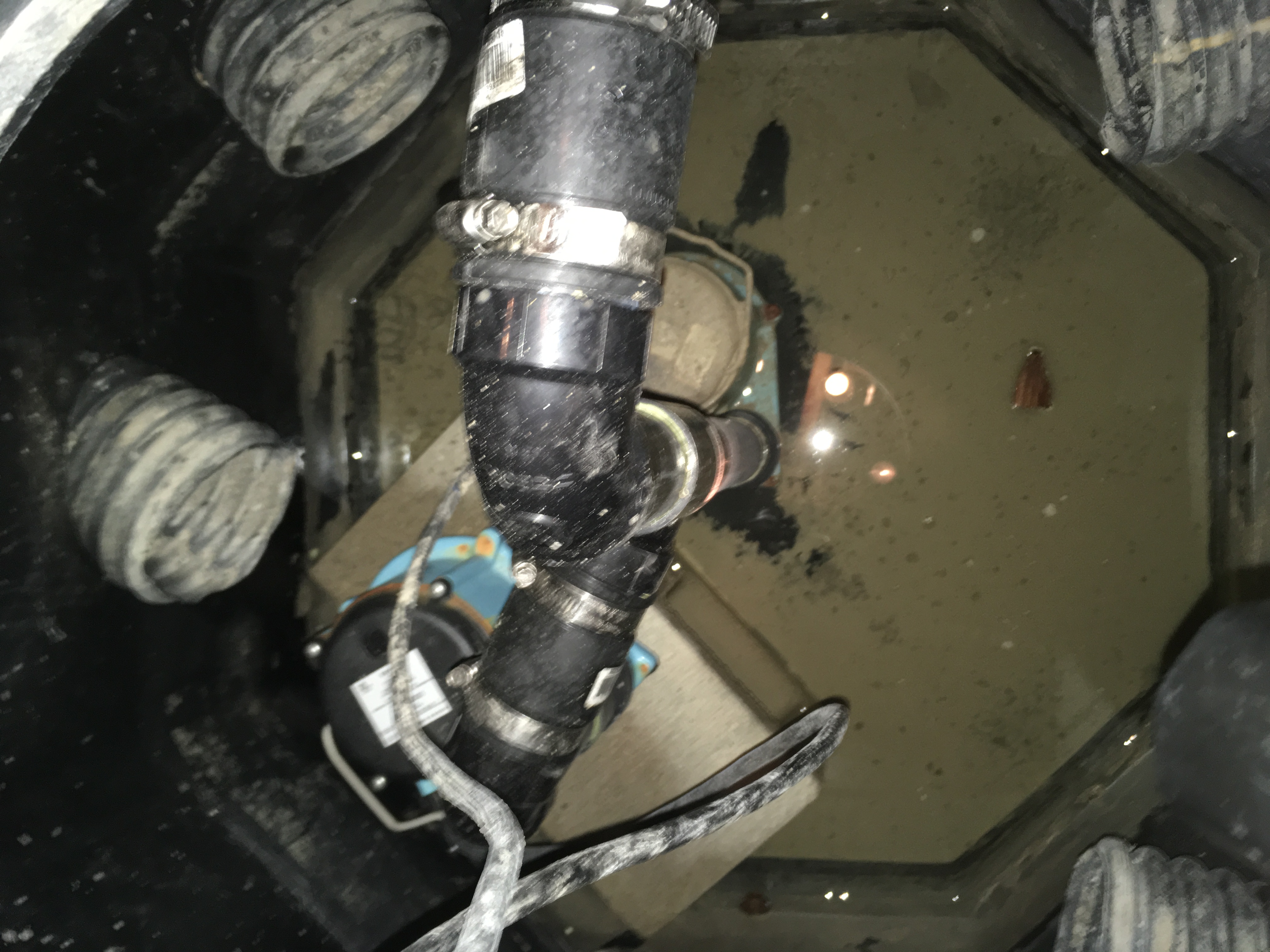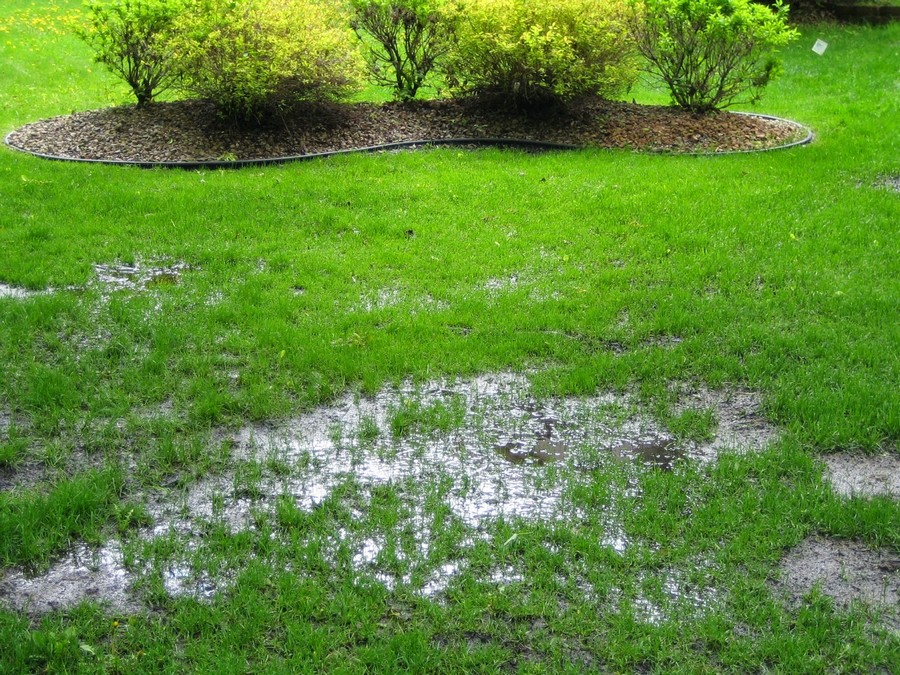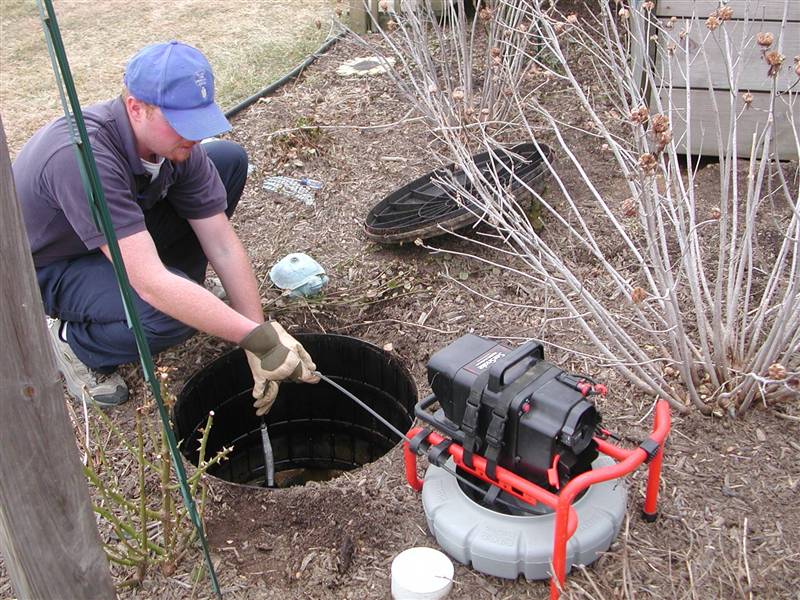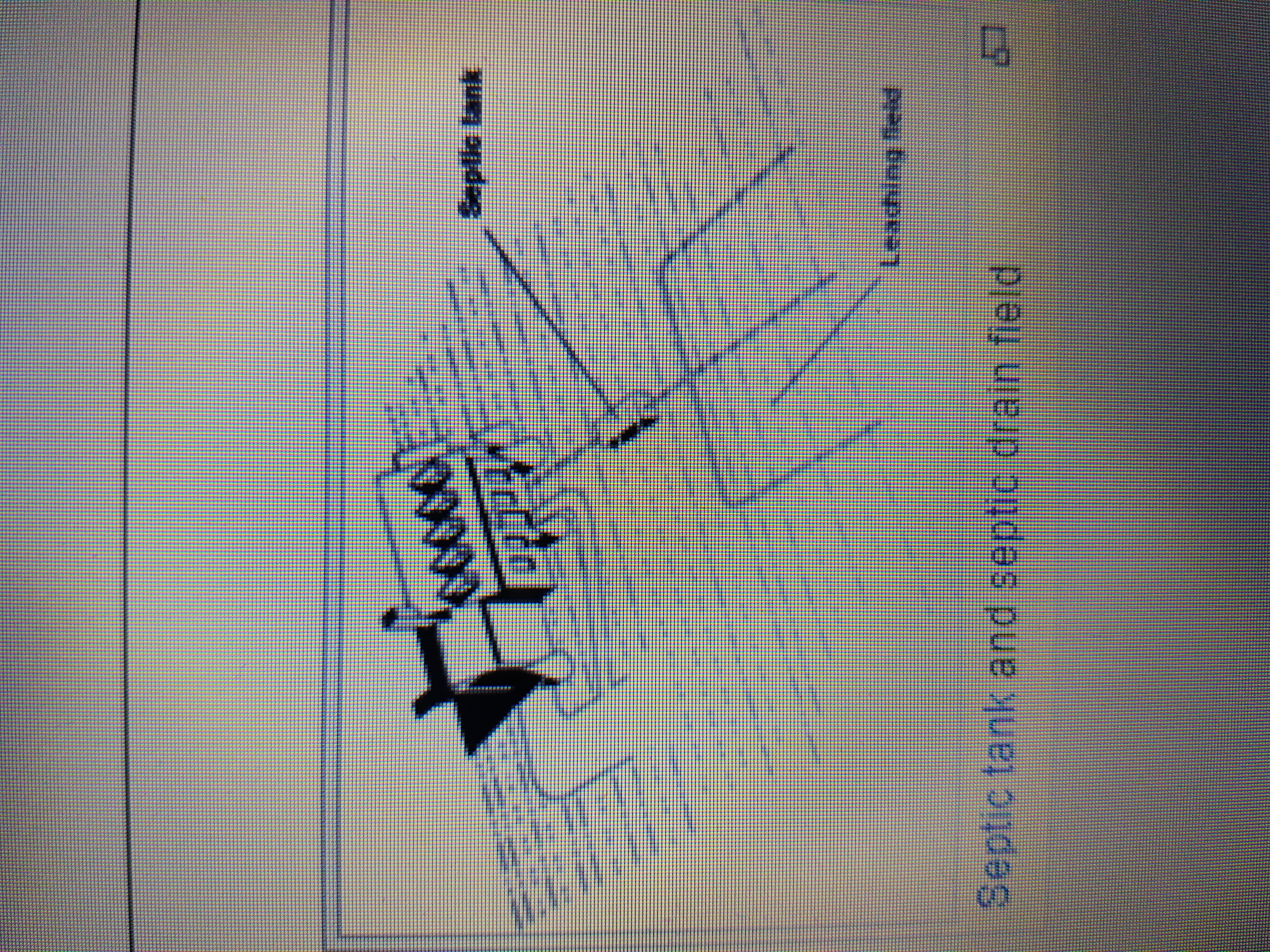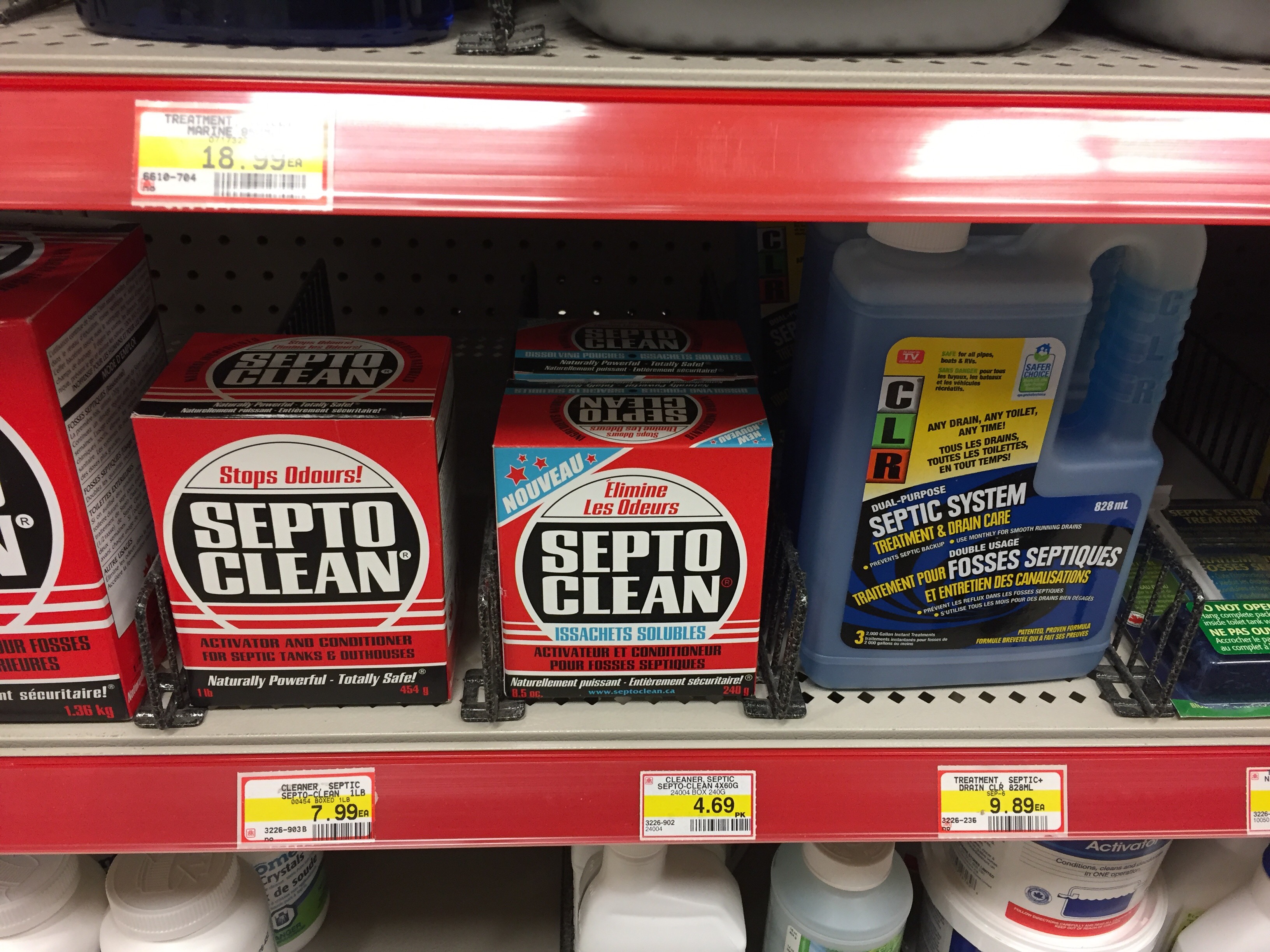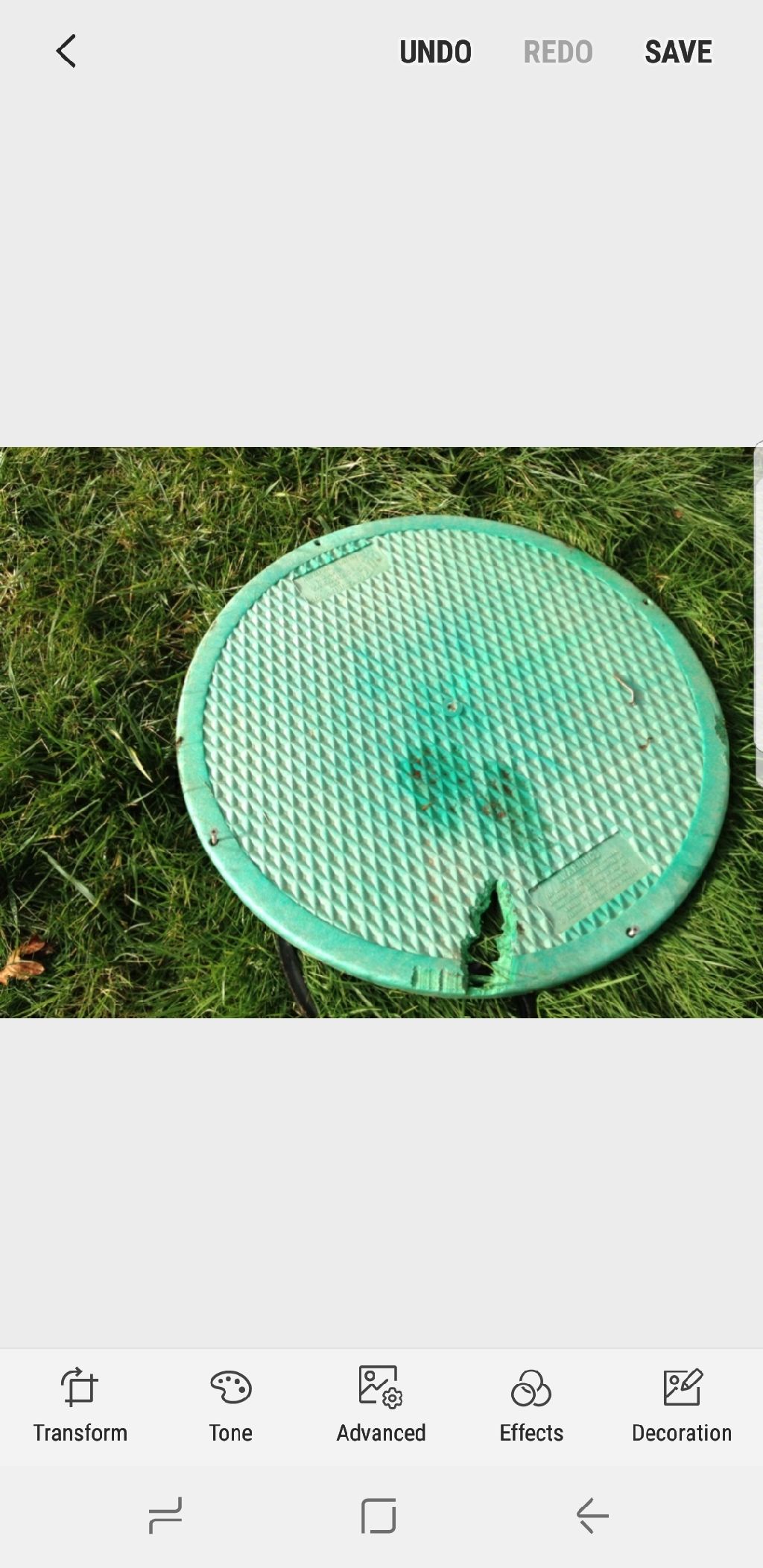The septic system at the property is functioning properly at the date and time of the inspection. Due the the ground being completely covered by snow the absorption area was unable to be inspected. The tanks are in good condition and the water levels in the tank are within normal limits. Recommend further evaluation in the spring when the absorbation area can be evaluated.
The septic system was functioning properly at the date and time of the inspection. The both tanks were in good condition and the water levels were all within normal limits. Due to the ground having several inches of snow on it the absorption area was unable to be inspected. This area should be further inspected in the spring when the weather warms and the ground is thawed.
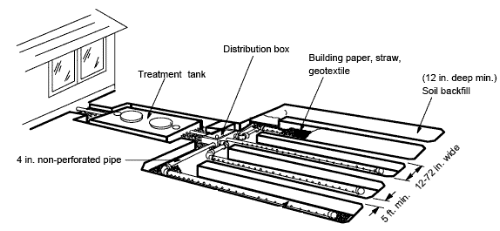
This picture shows a 2 pump sump system. This should not feed to the septic system in most cases. In areas of a high water table it will cause the system to fill very quickly. The line should disperse the water collected at least 10ft. from the home
Image I choose is Backflow Preventer. While this is about a Boiler System, it also can be applied to a Septic System. This will prevent the waste sent to the Septic tank from flowing back into the home if the tank is too full.
In this photo is a diagram of a healthy septic tank system versus a neglected septic tank system. In the neglected system you can see the sludge build up is nearly up to the outflow potentially causing d-box or drain field clogs.
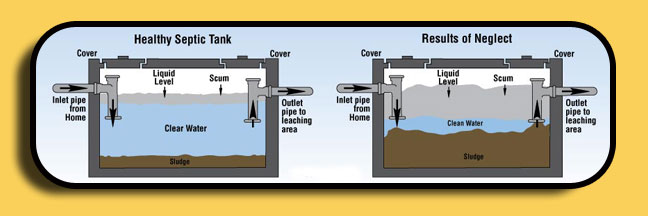
Sometimes it can be difficult to locate a septic system. Locating the components of a septic system can involve research with local government, previous owners, probing, looking for risers and inspection of the property itself. It is necessary to locate these components to do a proper inspection.
This area is where the drainage is for the septic system. Trench style system is used through this area. There is and will continue to be problems in this are due to low spot where water will pool above the leaching lines. This is a problematic system that needs corrections.
There are multiple styles of septic drainage systems. Most are buried and have been for many years, sometimes very hard to determine what style systems is in place, absorption trenches,absorption beds, cesspool, etc. Many other components may be hard to locate as well. An inspector must take his/her time and must research the home to help determine what type of system the home has and then determine how it is functioning.
I chose this image because it shows an inspector using his knowledge and tools to perform an inspection. I thought the section regarding tools was very useful as I had no idea what tools Id need to offer this service would be and how to properly execute the inspection using these tools.
I researched many systems in my area and the most common I found was mounded leaching fields as absorbtion systems. I found this useful as I found out my Home is actually using one of these systems with a holding tank.
The photo is a stack diagram photo from the internet. It depicts the home, septic, and leach field. The leach field is the depository for the effluent. The home deposits wastewater into the septic tanks (2 or 3) where solids sink and fluid is sent into the second or third tank to be dispersed via a pump to the pvc piping leading to the leach field where pvc pipes with drip holes allow the effluent to be safely dispersed into the soil.
Conventional Absorption Field diagram found in the first septic album. The leach field starts with piping from the effluent tank of the septic to a distribution box referred to as a D box. This box then delivers the effluent to the pipes in the leach field bed. The pipes are perforated so the bed can absorb the effluent. The pipes sit on a bed and are then covered in several feet of dirt. The dirt acts as a natural barrier for the effluent where the bacteria in the dirt finish processing the effluent to return it to a clean state. The leach field should be away from the well if there is one.
Most septic system experts consider additives to the septic system that ‘improve’ the systems function or restore ‘flow’ do not have substantial evidence to make those claims. Care must be taken when using such products, as flow problems can indicate system problems more involved than a chemical solution.
The article for this course was very good, too. I felt that the last paragraph was quite a good closing statement. “In summary, septic system inspections should be performed on an annual basis to ensure proper function. The septic tank is the most expensive household fixture and its lifespan will be shortened significantly if it is not maintained.”
-Distribution Box
The distribution box was located and exposed. The effluent level was elevated in the distribution box. Therefore, the condition of the distribution box could not be evaluated.
-Disposal Field
The disposal field is a perforated pipe in stone trench type system. The effluent flows through the distribution pipes evenly, and is dispersed through the perforations. The effluent is then absorbed in the stone, and underlying soils. At the time of inspection, the effluent was elevated above the distribution pipes. The camera was run out each line to verify that a clog had not caused the elevated level. There are four 20-foot distribution lines, 4 feet on center. Test pits in the disposal field verified that the entire area is saturated. No areas of surfacing or break-out were discovered. The disposal area is considered to be in a “high water” condition. Although not failed, the disposal area is working at a limited capacity, under its current load, and may be approaching the end of its life expectancy.
As a follow up to the article: The Dangers of Calling Yourself an Expert by Nick Gromicko and Mark Cohen, Esq., InterNACHI General Counsel.
I’m not sure “expert” is a term that I would have ever used to describe my expertise, but now, I certainly will not. It’s easy to see why an inspector might want to use the persuasiveness of the word “expert” to lure in potential customers, with little thought to the increased liability a simple word can create. The article really opened my eyes to the possible legal repercussions we potentially face with every inspection.
This retrofit outlet baffle is made from a sanitary t and a piece of pipe. It can be used to replace a damaged or missing outlet baffle. The baffle serves to prevemt solids or scum from leaving the tank and clogging the drain fields.
I read an article on septic tanks and the need for risers to be added. It is required by some local standards, and always good practice to add a riser to the covers of the tank. This prevents having to excavate prior to inspection and maintaining of the system.
The photo shows a septic tank riser that has been damaged apparently by a lawn mower blade. The damage will allow rainwater and or runoff to enter the tank, possibly overloading the system and also allowing odors from gases created in the system to escape.
A septic system inspection should be performed once a year and prior to placing a home for sale. A failed or non-functioning system can be expensive to repair or replace and could possibly cause a potential buyer to back out of the sale.
